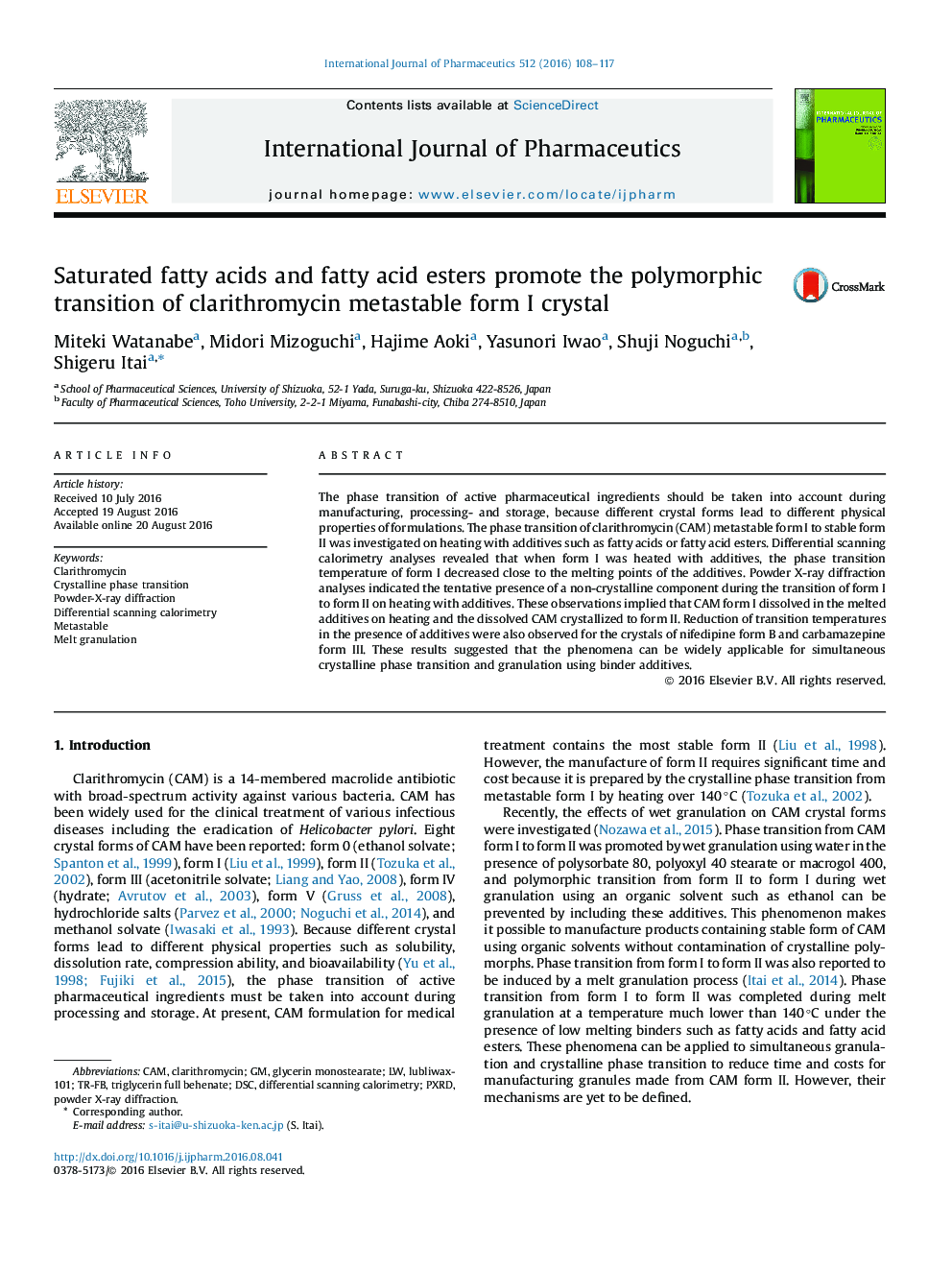| Article ID | Journal | Published Year | Pages | File Type |
|---|---|---|---|---|
| 2500771 | International Journal of Pharmaceutics | 2016 | 10 Pages |
The phase transition of active pharmaceutical ingredients should be taken into account during manufacturing, processing- and storage, because different crystal forms lead to different physical properties of formulations. The phase transition of clarithromycin (CAM) metastable form I to stable form II was investigated on heating with additives such as fatty acids or fatty acid esters. Differential scanning calorimetry analyses revealed that when form I was heated with additives, the phase transition temperature of form I decreased close to the melting points of the additives. Powder X-ray diffraction analyses indicated the tentative presence of a non-crystalline component during the transition of form I to form II on heating with additives. These observations implied that CAM form I dissolved in the melted additives on heating and the dissolved CAM crystallized to form II. Reduction of transition temperatures in the presence of additives were also observed for the crystals of nifedipine form B and carbamazepine form III. These results suggested that the phenomena can be widely applicable for simultaneous crystalline phase transition and granulation using binder additives.
Graphical abstractFigure optionsDownload full-size imageDownload high-quality image (165 K)Download as PowerPoint slide
